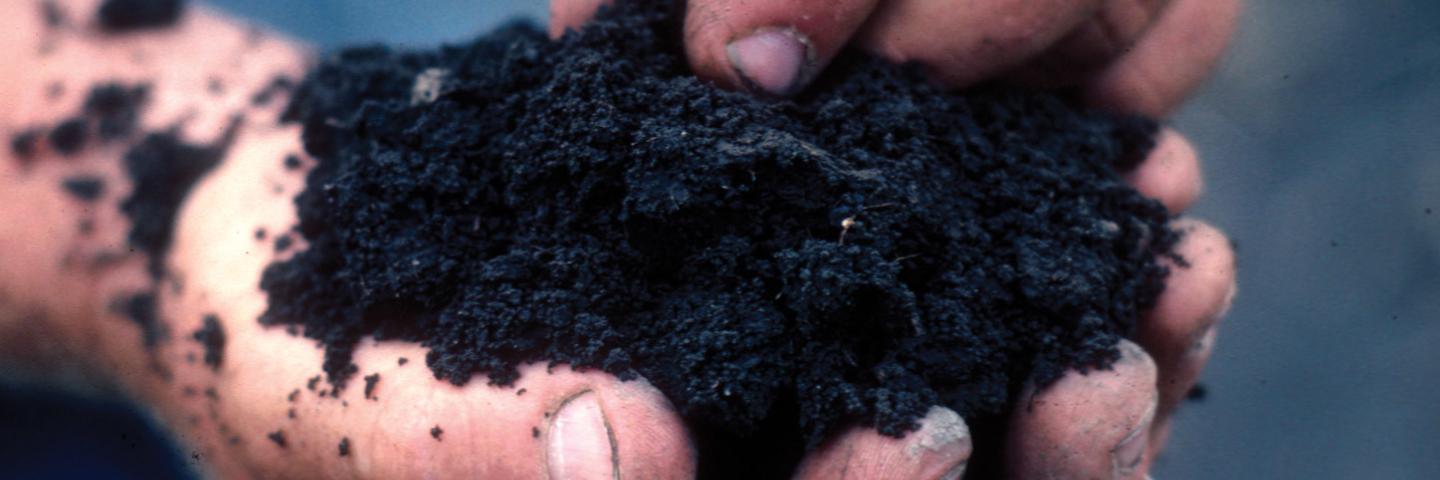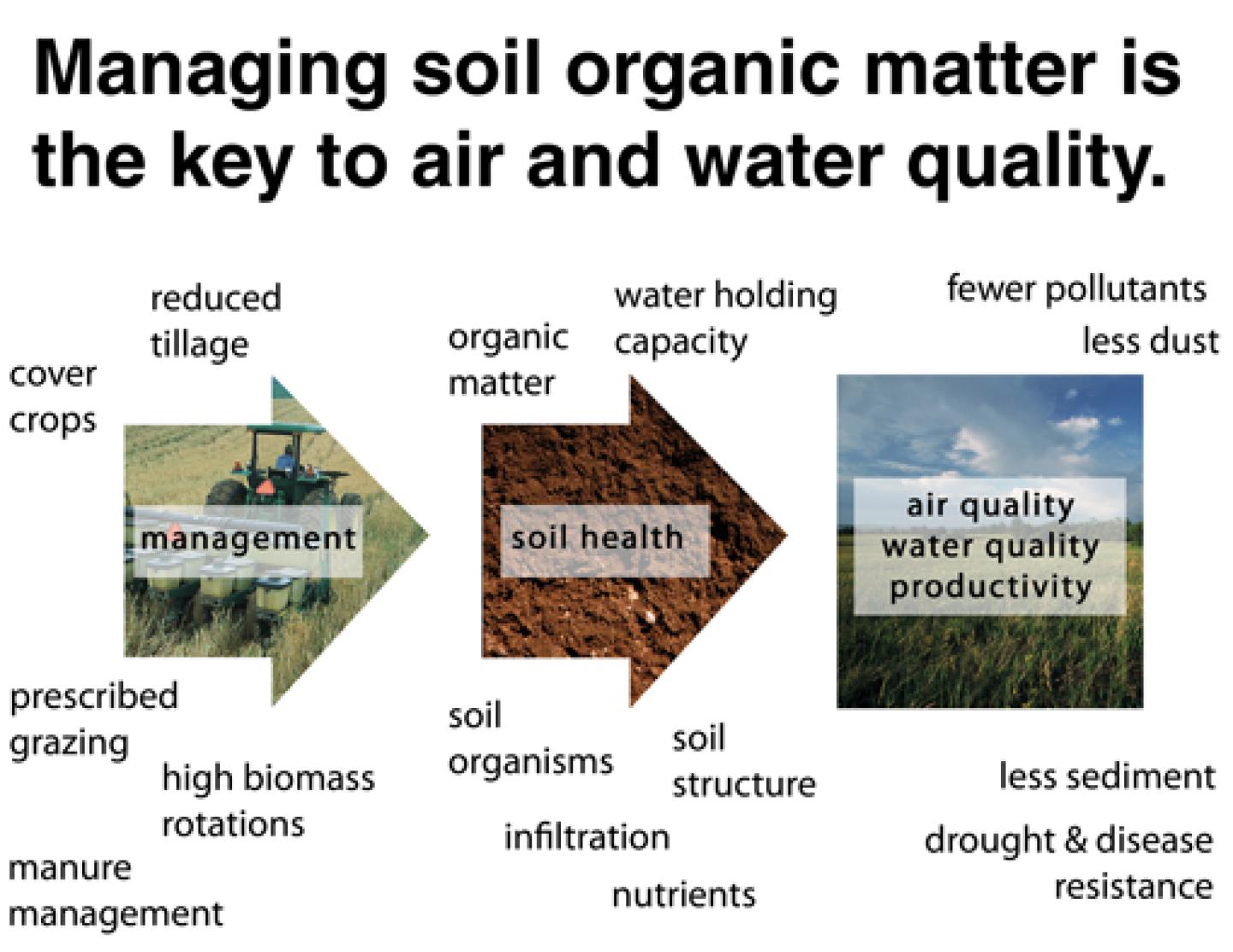
Managing soil organic matter is the key to healthy soil and air and water quality.
Erosion Control is Not Enough
Soil conservation policy in the United States stems from the devastating erosion events of the 1920s and ’30s. Out of concern for preserving agricultural productivity came the concept of tolerable soil loss and the creation of the "T" factor, which is the maximum annual soil loss that can occur on a particular soil while sustaining long-term agricultural productivity. Conservationists focused on reducing soil loss to T by applying practices, such as terraces, contour strips, grassed waterways, and residue management.
By the end of the twentieth century, concerns about air and water quality became as important as concerns about agricultural productivity. To address these environmental goals and maintain the land’s productive potential, we must now go beyond erosion control and manage for soil health. How soil functions on every inch of a farm, not just in buffers or waterways, affects erosion rates, agricultural productivity, air quality, and water quality. The most practical way to enhance soil health today is to promote better management of soil organic matter or carbon (C). In short, we should go beyond T and manage for C.
Why Focus on Soil Organic Matter?
Many soil properties impact soil health, but organic matter deserves special attention. It affects several critical soil functions, can be manipulated by land management practices, and is important in most agricultural settings across the country. Because organic matter enhances water and nutrient holding capacity and improves soil structure, managing for soil carbon can enhance productivity and environmental quality, and can reduce the severity and costs of natural phenomena, such as drought, flood, and disease. In addition, increasing soil organic matter levels can reduce atmospheric CO2 levels.



